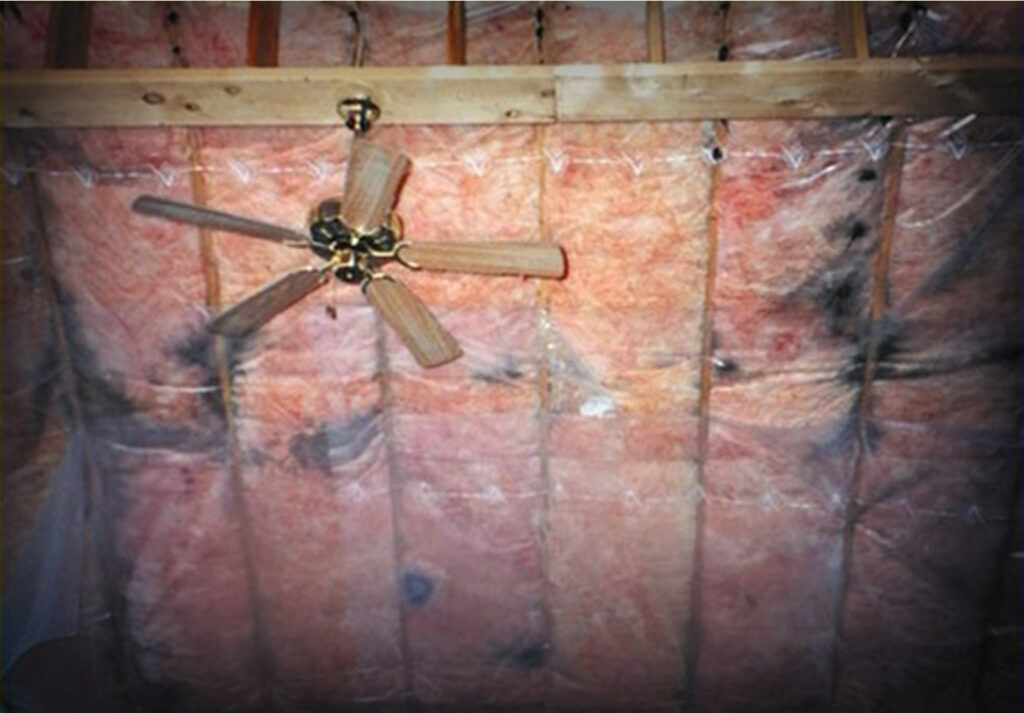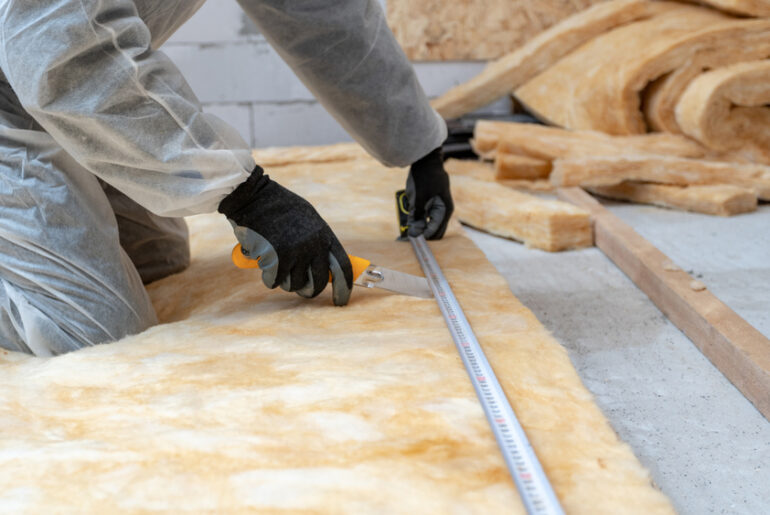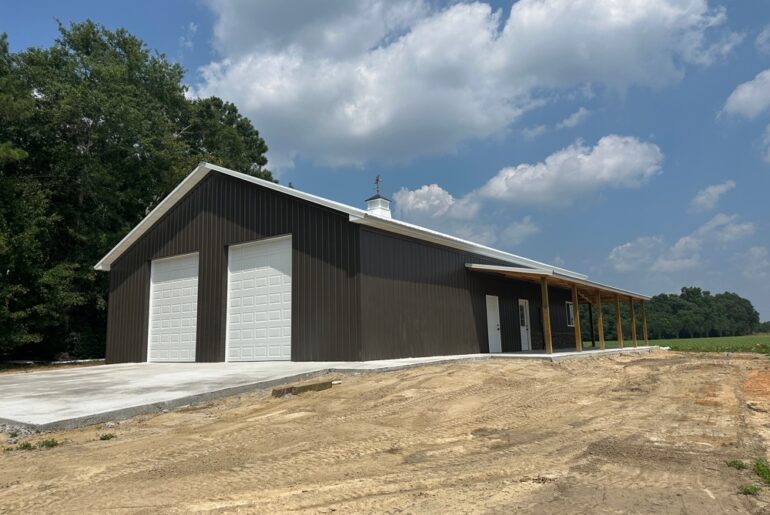Fiberglass insulation stands as one of the most effective options for keeping your home warm through winter or cold in the heat. It is cheap, easy to install, and pays for itself over a few years. However, fiberglass insulation is not free of faults, and its drawbacks can threaten your family’s health.
Underneath the warmth, energy, and cost savings fiberglass insulation promises, the dangers are rarely discussed. Increased contact with fiberglass triggers reactions ranging from skin irritation to more serious allergic reactions. And there is a risk of fiberglass being carcinogenic, calling for thorough consideration before using it for your home’s insulation.
How threatening are the dangers of fiberglass insulation? Can you live peacefully with fiberglass insulation, or should it be avoided in favor of other insulation materials?
Below are the less known dangers of fiberglass insulation that can threaten you and your family’s safety and how you can deal with them.
1. Allergy and Skin Irritation
Workers or homeowners who have just come in contact with fiberglass often experience itchy skin causing many to think of it as a skin irritant.
The itch experienced after contact with fiberglass is caused when tiny particles from the material scratch the skin leaving microscopic cuts. Fiberglass particles can also get into your eye, causing it to itch and redden. These symptoms from exposure to fiberglass are known as mechanical irritation.
Fiberglass can also get stuck in skin pores, causing more severe rashes that appear as a patch of dry, red blisters. Prolonged exposure to fiberglass may cause allergic contact dermatitis, which is triggered by the resins that hold the fiberglass materials together.
Fortunately, most of the symptoms caused by fiberglass contact are temporary and subside once you are no longer in the same room with it.
Therefore, wearing long, protective clothing when working with fiberglass is important. Ensure you wear goggles, gloves, long pants, long-sleeved shirts, or DIY overalls if you self-install the material or need to replace it.
2. Mold and Mildew
Fiberglass has a major advantage over materials like cellulose, mineral wool, and polyurethane as insulation materials because of its resistance to mold and mildew. But even fiberglass is not immune to the growth of mold.
Fiberglass resists the growth of mold and mildew primarily because of its effectiveness in keeping moisture out of the house. Unlike cellulose, mold fiberglass does not have an organic base that mold can feed on. It is also difficult for mold to settle on fiberglass because the glass fibers easily puncture mold spores.

Regrettably, fiberglass gives in to moisture in high-humidity environments. Moisture compromises the effectiveness of fiberglass insulation from molds. When water molecules get trapped in fiberglass, molds can easily take advantage to grow in those openings and spread around the house.
Homeowners can, however, prevent mold growth on fiberglass insulation by ensuring the material doesn’t come in contact with moisture. You can do this by sealing leaks, improving air ventilation, and installing a vapor retarder.
3. Breathable Particles
Breathing fiberglass can lead to negative short-term and long-term consequences.
Fiberglass readily sheds off fine particles that can be easily picked up by air and inhaled, causing respiratory irritations. When inhaled, the particles can cause sore noses, sneezing, nosebleeds, and other respiratory discomforts. Fiberglass dust can trigger and worsen asthma and bronchitis.
Respiratory symptoms experienced from inhaling fiberglass dust can be caused when its particles scratch against your tissues. Many of these symptoms are also temporary and are relieved when you leave the vicinity.
While the body automatically expels most foreign objects out of your respiratory tract through coughing, the smallest fiberglass particles can escape this process. These particles remain stuck in your lungs, creating scar tissues, and can expose you to dire long-term consequences.
For example, Japanese medical researchers believe continued exposure to fiberglass causes a chronic lung disease similar to the one caused by asbestos. There is also a risk of developing pulmonary fibrosis.
Consequently, it is crucial to prevent poor installation or exposure to fiberglass insulation. It is a good idea to keep a particulate respirator in the house if you have fiberglass insulation. You should also routinely check for fiberglass insulation exposure to ensure your family’s safety.
4. Possible Carcinogen
In the late 90s, the possibility of fiberglass being a carcinogenic material gained traction. Around this time, many people who had previously worked with fiberglass were being diagnosed with cancer. Eventually, researchers found that the cancer rate in fiberglass workers was not higher than that in those working in other industries.
Studies have shown an increased risk of cancer in animals with fiberglass implanted in their lungs. These studies have been disclaimed, and it is now thought that the method of implanting the fiberglass particles in the animals was responsible for the correlation discovered.
More research was carried out on the possibility of fiberglass being a carcinogen. But studies after studies could not prove a link between the two. The International Agency for Research on Cancer has cleared Fiberglass from the list of cancer-causing materials for humans.
Regardless, the Occupational Safety and Health Administration (OSHA) has a clear limit on the amount of fiberglass any worker can be exposed to.
5. Fire-resistant, Not Fireproof
Fiberglass is made up of glass and sand held together with resins that are then processed into fibers and spun into bundles called batts. Since none of these materials are combustible, fiberglass serves as good protection against fires.
While fiberglass is fire-resistant, it is not fireproof. Often fiberglass insulation is backed with paper-based materials that can catch on fire. Even then, fiberglass will not spread the fire but can release toxic fumes under high heat.
Old fiberglass materials were treated with formaldehyde, a very toxic chemical to humans and the source of the fumes from smoldering fiberglass. Fortunately, Formaldehyde has recently been banned in the US for fiberglass treatment because of its toxicity.
Is Fiberglass Insulation More Dangerous Than Other Insulation Materials?
Despite its faults, fiberglass insulation is hardly any more dangerous than other insulation materials. For example, cellulose insulation is far more vulnerable to mold growth and is highly flammable except when treated with fire-retardants. Polyurethane insulation can release toxic substances like isocyanates and hydrogen cyanide.
What’s Good About Fiberglass Insulation?
Fiberglass insulation has many features working to its benefit. These features offset the potential dangers it carries and make fiberglass one of the most popular insulation choices. Some of the pros of fiberglass insulation are:
- Low Costs. Fiberglass insulation is cheap compared to other forms of home insulation like radiant barriers. Plus, fiberglass practically pays for itself in a few years in the amount of energy it saves you through heat retention.
Not to mention fiberglass is easy to install, so you can save labor costs and do it yourself as long as you make sure to take necessary precautions and wear protective clothing.
- Efficiency & High R-Value. Fiberglass does a great job of its primary function of keeping the house warm. The ability of a material to resist the flow of heat is measured as its R-value. That is, the higher the R-value of a material, the better it is at insulation.
Fiberglass scores a high R-value. What’s more? Fiberglass insulation can easily be doubled or tripled to increase its insulation capacity.
- Fire Resistance. Fiberglass is naturally resistant to fire and will protect you and your property in the case of a fire accident.
- Noise Insulation. Fiberglass insulation naturally muffles sound, making it a noise insulator. While it doesn’t eliminate the flow of sound or make your space sound-proof, the noise-dampening effect keeps your home calm and quiet.





